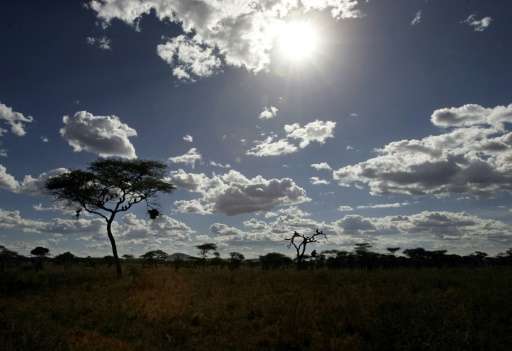Global helium supplies balloon

World supplies of helium, the gas that makes your voice squeaky, may be on the ascent.
Scientists and a Norway-based exploration firm this week hailed a huge find of the rare element in Tanzania as a potential game changer.
Helium, the second most abundant gas of the universe after hydrogen but found only rarely on Earth, is used notably as a liquid coolant in hospital MRI scanners, electronics and the manufacturing of fibre optics.
Until now, helium had been discovered only as an accidental by-product of oil and gas drilling, said Oxford and Durham university researchers and the exploration company, Helium One.
But for the first time, they said, an exploration team had found helium deliberately, using their knowledge that volcanic activity can release the gas from ancient rocks.
"We show that volcanoes in the Rift play an important role in the formation of viable helium reserves," said researcher Diveena Danabalan of Durham University, which joined with Oxford University and Helium One in the search.
Oxford University professor Chris Ballentine said the team had calculated that helium reserves in just one part of the African Rift valley amounted to 54 billion cubic feet, enough to fill more than 1.2 million medical MRI scanners.
'Game changer'
"This is a game changer for the future security of society's helium," Ballentine said in a joint statement released Tuesday when the find was revealed.
"Similar finds in the future may not be far away," he said.
World helium sales amounted to an estimated $1.01 billion (909 million euros) in 2015 and are expected to balloon to $1.52 billion in 2020, said a report by market research group Technavio.
Eric Prades, global helium and rare gases director at French group Air Liquide, said 80-90 percent of the world's helium is extracted from natural gas wells in a process that relies on very low temperatures.
The Tanzania find had an "interesting potential" because it avoids the cost of extracting the element from natural gas, said Prades, who was not involved in the find.
Helium prices climbed in 2012-2013 over supply concerns, said the Air Liquide specialist. At the time, Tokyo Disneyland went so far as to ban helium balloons.
But supply worries have largely evaporated since, said Prades.
Russian oil and gas giant Gazprom could produce 40 percent of the world helium market by the 2020s thanks to a vast extraction project at a natural gas field in Siberia, he said.
Iran could begin producing helium too, Prades said, explaining that it shares the same natural gas field as Qatar, the world's second largest producer after the United States.
Meanwhile, demand for helium is expected to grow only moderately by two-to-three percent a year over the next five years, the expert said.
© 2016 AFP

















